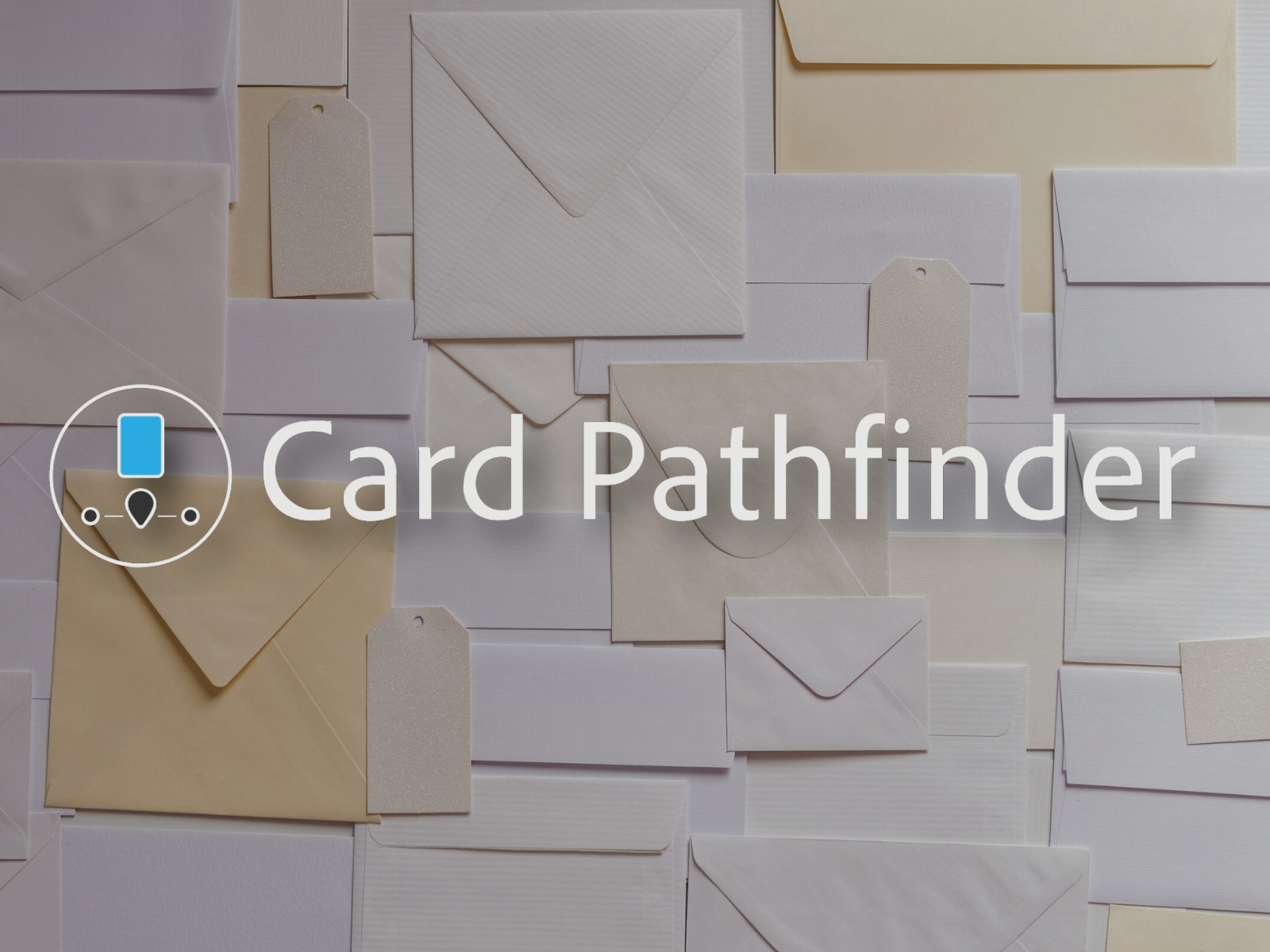Tap. Untap. Make mana. Tap. Untap. Make mana. Grab two lands. Give it haste. Kill you. You’re left scratching your head trying to figure out how to beat Amulet Titan in Modern.
Amulet Titan is perhaps one of the strongest (but also most misunderstood) archetypes in all of Modern MTG. If you’ve played across the table from an experienced Amulet player, you know the deck plays far differently from most other decks. At its heart, Amulet is a complex strategy that uses a combination of creatures, triggered abilities, and lands to beat you.
In this article, we’ll cover everything you need to know about this fearsome deck so you can be prepared to take it down from the other side of the table. We’ll also explore some sideboard options and look at the best matchups against Amulet Titan.
What is Amulet Titan in Modern MTG?
Amulet Titan gets its name from two key cards: Amulet of Vigor and Primeval Titan. The goal is to combine these two pieces along with green bounce lands like Simic Growth Chamber to quickly close the game. It also relies on ramp spells to speed up its game plan when Amulet isn’t on the field. These include Arboreal Grazer, Explore, Azusa, Lost but Seeking, and most importantly, Dryad of the Ilysian Grove.
Ultimately, the plan is to put a titan into play well before turn six. With an optimal start, Amulet Titan is capable of winning the game as soon as turn two, though turn three is a more realistic roadmap for consistent wins.
On the surface, this deck looks highly complex. It’s what scares many players away from playing Amulet and what keeps many opponents confused when sitting across from it. However, there are some key repeatable lines that make gameplay much clearer. It’s important to understand how the Amulet player wants to win the game so you can efficiently disrupt their plan. This deck punishes stumbles, and oftentimes, one misjudgment is all it takes to lose the game.
Amulet Titan’s Key Threats
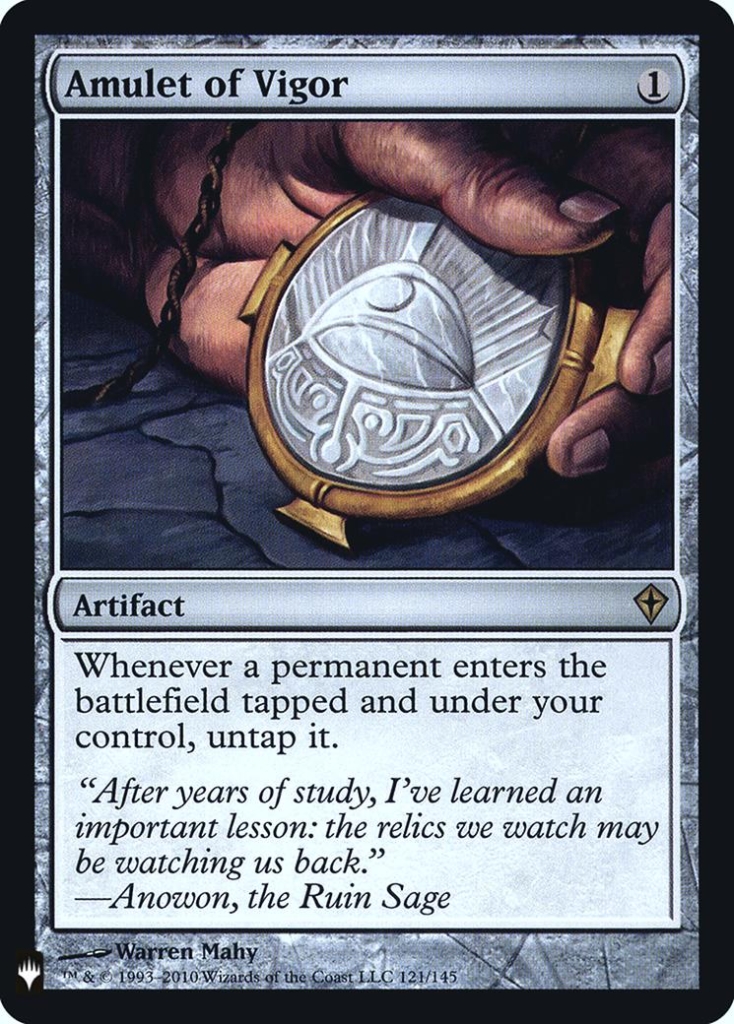
Amulet of Vigor
This card seems pretty unassuming at first glance. Untapping a permanent when it enters tapped isn’t all that strong on the surface. However, when paired with bounce lands and effects that let you play more than one land per turn, it enables explosive bursts of mana generation. With two Amulets in play, the opponent gets four mana generated for playing a single bounce land. With a Dryad in play, they can make eight mana per turn just by playing lands. And yes, this can happen quite often on turn three.

Primeval Titan
This big guy is plan number one for winning the game. After making their way to six mana, the opponent will drop Prime Time onto the field. With Amulets in play, this allows them to kill on the spot if you don’t have interaction thanks to the combination of Sunhome, Fortress of the Legion and Slayers’ Stronghold giving the titan haste, double strike, and a power buff.
This instant kill doesn’t often happen without Amulets in play. However, Titan gives your opponent incredible flexibility to grab utility lands that seal the game. For instance, it can grab a Tolaria West and a bounce land, returning Tolaria West and using it to find Summoner’s Pact to find another Titan. Or, they can grab Valakut, the Molten Pinnacle to set up damage-based kills with Dryad.
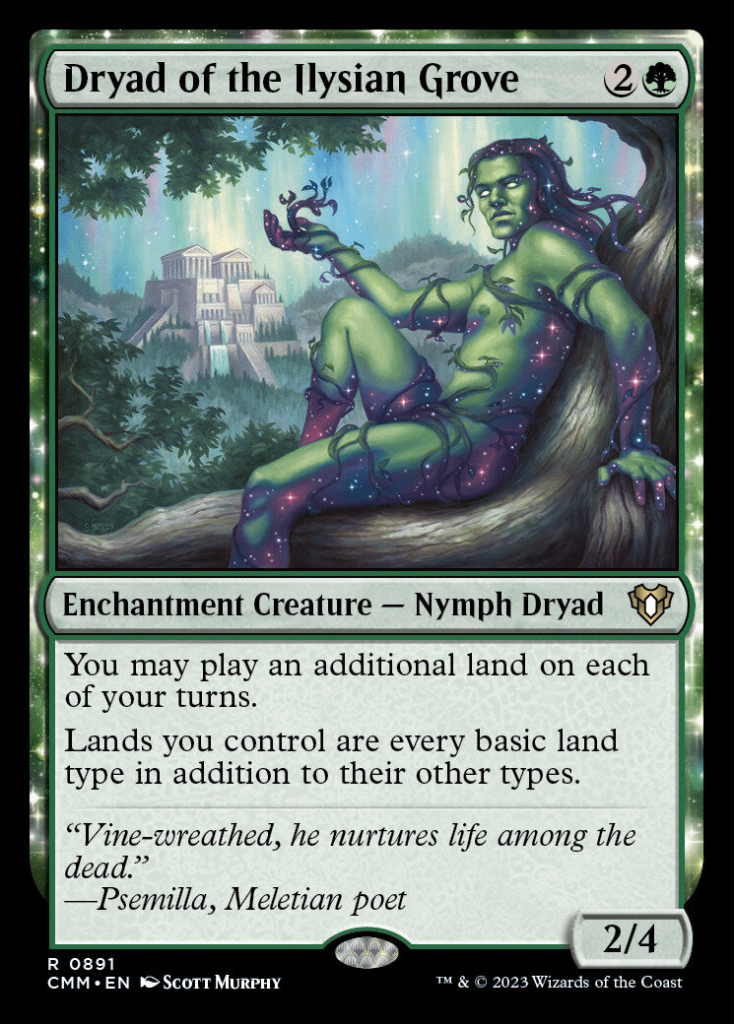
Dryad of the Ilysian Grove & Valakut, the Molten Pinnacle
Speaking of, Dryad of the Ilysian Grove is a central cog in this deck. In the early game, Dryad lets you ramp by putting an extra land into play every turn. With an Amulet in play and a bounce land, you get to generate four mana right away.
Perhaps most important, though, is Dryad’s ability to turn all your lands into “mountains” to enable Valakut kills. With a Dryad out, your opponent can search for two Valakuts and put four triggers on the stack to deal 12 total damage.
Do keep in mind, though, if Dryad is removed while the Valakut triggers are on the stack, they’ll no longer deal damage since your lands are no longer mountains.
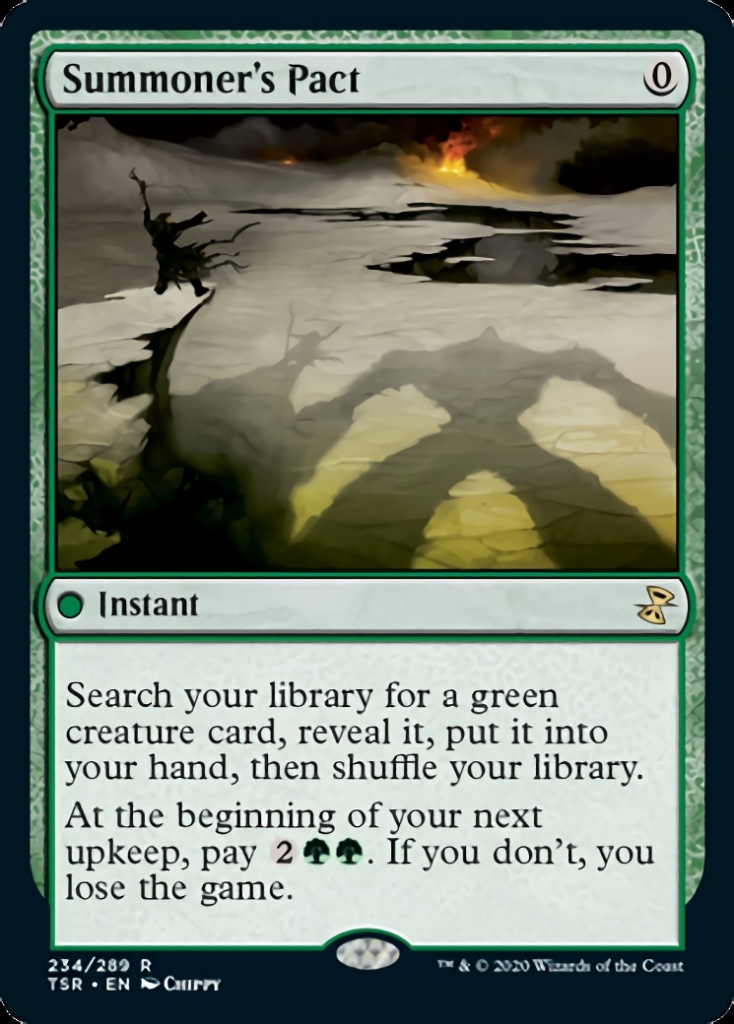
Summoner’s Pact
Summoner’s Pact essentially gives your opponent an additional four copies of each of their creature threats by allowing them to search for a copy of what they need for free. The drawback is that they must pay 2(G)(G) at the start of their next upkeep or lose the game. However, this is often inconsequential since fetching a Dryad or Titan is often enough to either win the game outright that turn or be so far ahead on board that paying four mana the next turn doesn’t matter.
Keep in mind that your opponent can also use the Transmute ability on Tolaria West to tutor a copy of Summoner’s Pact to their hand. This sets up situations where they can get multiple Titans into play in a single turn or fetch a Titan after playing a Dryad to line up Valakut kills.

The One Ring
Amulet Titan got a big boost when The Tales of Middle Earth joined Modern this summer. The One Ring not only buys the deck time to set up its combo by granting protection, it also digs to find combo pieces. Though The Ring won’t win the Titan player games on its own, it is a powerful card that needs to be dealt with quickly before it can enable the combo.
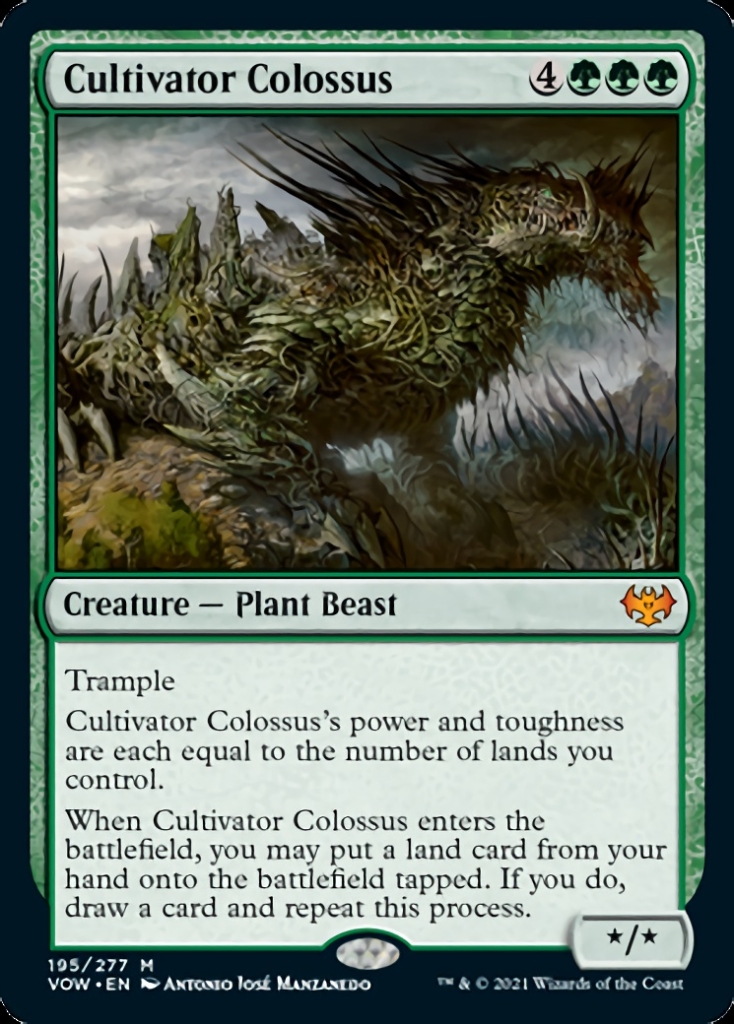
Cultivator Colossus
Cultivator Colossus is an alternative threat in this deck that is capable of winning games by putting obscene amounts of land into play. If there’s an Amulet on the field when Colossus resolves, there’s a good chance the game will end on the spot after the Amulet player draws a ton of cards and makes mana to chain into their next threat.
Cards That Beat Amulet Titan in Modern
If you’re expecting to beat Amulet Titan in Modern without a solid, well-thought-out game plan, I have bad news for you. But, with the right tech and a good strategy, you can take down this Modern menace. The following cards are effective against Titan whether you plan to play them in your main deck or bring them in from the sideboard for games two and three.
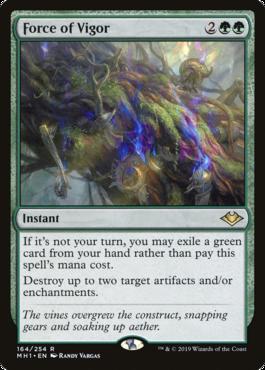
Force of Vigor
Force of Vigor is perhaps the best sideboard card you can pack if you want to beat Amulet Titan. This card sets up some absolute blowouts depending on how your opponent starts or can just force them to play a slower game. However, the dream is hitting their T1 Urza’s Saga and Amulet of Vigor all in one go. It’s difficult to lose those games if you can back it up with any semblance of pressure.

Leyline Binding
With the right manabase, Leyline Binding is a one-mana answer to every key piece of the opponent’s deck. It hits Titan, Dryad, The One Ring, Amulet, and any other random non-land pivots they might have. Be mindful that they can answer binding with Boseiju (and tutor Boseiju with a new Titan or Tolaria West).
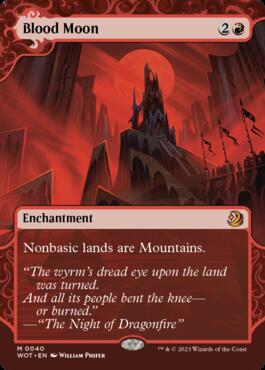
Blood Moon
Ensuring that your opponent’s lands don’t tap for two mana (or green if they’re not a Forest) can significantly slow the game down. Blood Moon and other Moon effects also negate Urza’s Saga and Valakut.
Keep in mind that if your opponent resolves a Dryad after you play Blood Moon, their lands will be able to tap for any color, but won’t have any additional abilities. This can let them sneak a Titan through even without basic Forests to pay for green. But, if your Blood Moon comes into play after Dryad, their lands will all be mountains.
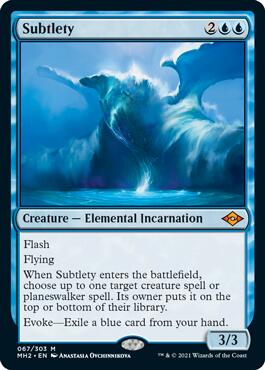
Solitude & Subtlety
If you can manage to keep Titan and Dryad off the table, Amulet does a whole lot of nothing. Though this is easier said than done, Solitude and Subtlety do a great job of facilitating this. The latter is perhaps more effective if you have a strong tempo plan since it stops your opponent from tutoring lands or being able to play extras. Solitude, on the other hand, is a permanent answer to these pesky creatures. Beware though, with Amulet in play, even exiling their creatures may not be enough to save you from their effects. A Titan ETB trigger could enable the opponent to grab a bounceland and Tolaria West to go again. A Dryad lets them play another land (and then generate mana) before you can respond.
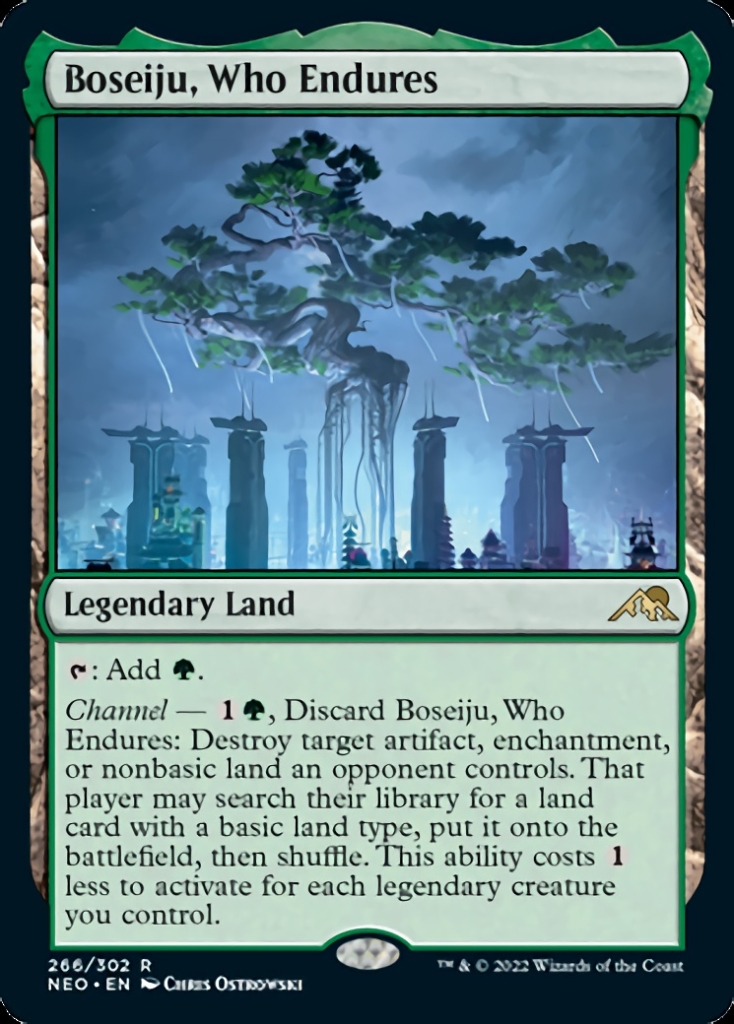
Boseiju, Who Endures
Much like Force of Vigor, Boseiju is great at slowing the Titan opponent down. You can use it to blow up an Amulet or Urza’s Saga before they can find one with it. You can also use it to kill a Dryad or destroy a Valakut. Note that doing the latter with triggers on the stack still allows them to resolve.
One cute though somewhat rare line is destroying a bounce land when it will cut the opponent off from paying for their Summoner’s Pact trigger. You can also destroy a bounce land in response to the Amulet untap trigger to prevent them from getting mana off it, though you’re usually better off just destroying the Amulet itself.
Honorable Mention: Ragavan, Nimble Pilferer
Arboreal Grazer will have a lot to say about whether Ragavan can swing the matchup. However, if left unchecked, the monkey pirate can wreak havoc by putting you so far ahead of your opponent that you can manage the rest of their game plan.
Honorable Mention: Dress Down
Dress Down is seeing much less play than it once did. However, it is still a powerful card against Amulet. Not only does it shut off Titan’s ETB trigger, it also temporarily removes Dryad’s abilities. This can be helpful when you need to buy yourself a turn.
Best Matchups Against Amulet Titan in Modern
If you expect to face down a lot of Titan, there are plenty of decks that can beat it. One of them is Rakdos Scam. This deck is incredibly well-equipped to beat Amulet in Modern thanks to its powerful combination of hand disruption, early pressure, and access to both Ragavan and Blood Moon (as early as turn two). Some Scam decks even play Necromentia to fully remove the threat of Titan or Dryad, but this often isn’t needed.
Five-Color Creativity also has a respectable Titan matchup thanks to its strong yet flexible suite of interaction. Leyline Binding is a house here while cards like Reprieve and Mana Leak keep threats off the table. Although the deck can be vulnerable to one-turn kills after tapping out to resolve a Creativity, experienced pilots know not to leave this type of opening.
The Murktide matchup is interesting. Much of it hinges on whether the Amulet player gets a Cavern of Souls into play. If not, the Murktide player can set up a strong tempo game and hold up counterspells and removal. If you’re on the blue-red side, be wary of the Titan player sandbagging a Cavern until the turn they’re ready to play Titan/Dryad to try and catch you off guard.
Rhinos can have a strong Amulet matchup if equipped with Blood Moon effects. The deck can generate tons of power to quickly close the game and buy time with cards like Fire//Ice, Force of Vigor, Force of Negation, and Subtlety. The new Domain Rhinos list is slightly less favored since it doesn’t have access to Blood Moon. Even a buffed-out Scion of Draco is no match for a hasty Titan.
Degenerate decks including Infect and Mill also have good Amulet matchups since they fight on a unique axis and can typically race faster than the Amulet deck can. However, given their abysmal matchup spread against the rest of the field, they shouldn’t be considered a solution.


 Support us on
Support us on 